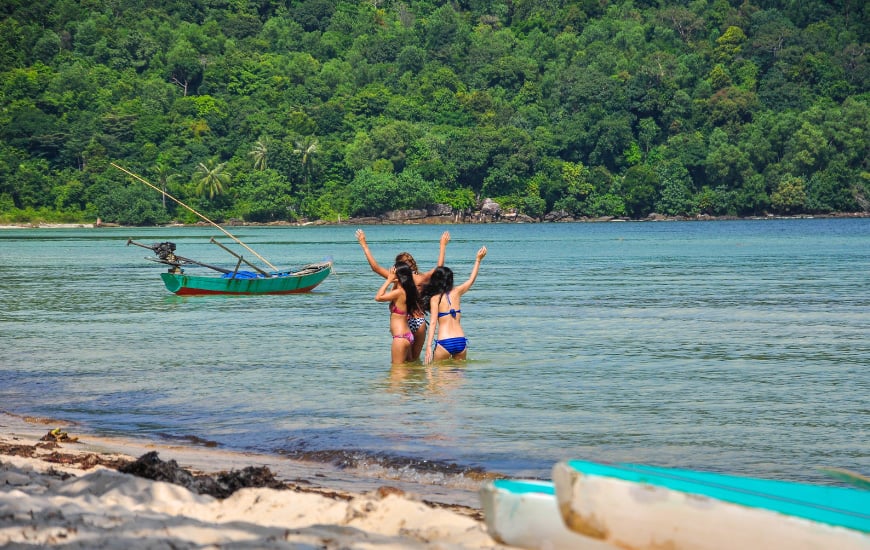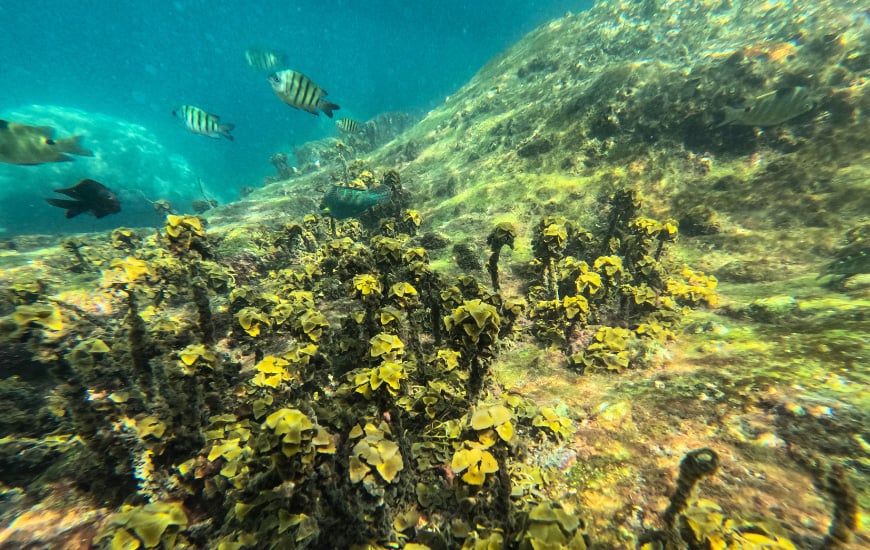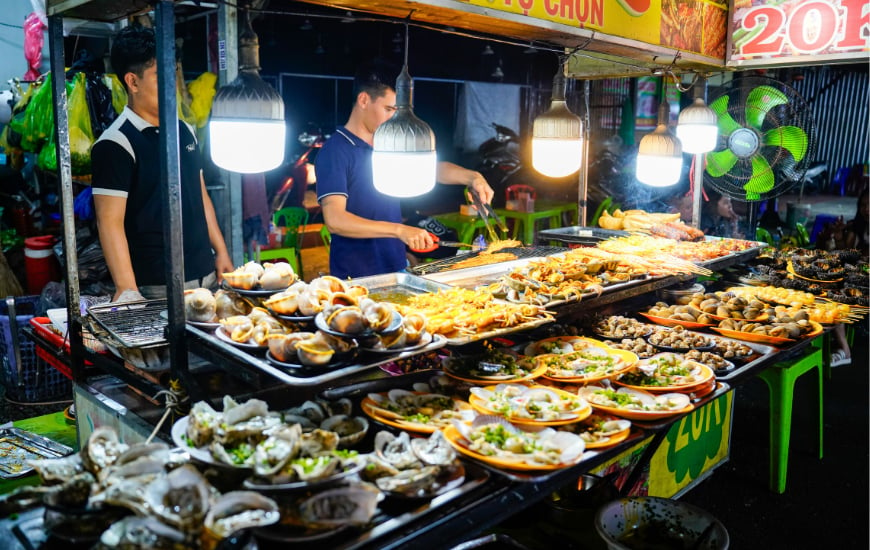 Overview
Overview
 Phu Quoc
Phu Quoc, the largest island in Vietnam, is a true tropical gem located in the Gulf of Thailand. With its pristine white-sand beaches, turquoise waters, and lush nature, it attracts travelers seeking relaxation, adventure, and discovery.
However, this haven of peace, now popular with travelers, has not always known such tranquility. Until the mid-18th century, the island remained secluded, home to a modest community living off fishing.
Phu Quoc, an island of recognized beauty today, has endured through the ages with resilience. Occupied by the French in 1869, it saw the development of rubber and coconut cultivation before returning to Vietnam in 1949. The American-Vietnamese war left deep scars, notably at the Coconut Tree prison, which has become a place of remembrance. Tensions with Cambodia, marked by the ephemeral occupation of the Khmer Rouge in 1975, also put the island to the test.
Today, Phu Quoc is a booming haven of peace, looking towards the future.
 Top Attractions
Top Attractions
Phu Quoc, the Emerald Island - Mr Linh's Adventures
Discover the enchanting island of Phu Quoc, a Vietnamese gem brimming with natural beauty and cultural experiences. This idyllic destination offers a diverse array of attractions that are sure to captivate every traveler.
For those seeking idyllic escapes, Phu Quoc boasts a collection of
dreamlike beaches. Renowned stretches of sand such as
Long Beach,
Sao Beach, and
Dai Beach invite visitors to unwind, take refreshing dips in the turquoise waters, partake in exhilarating water sports, or simply be mesmerized by the island's spectacular sunsets.

Golden Sands and Crystal Waters of Phu Quoc - Mr Linh's Adventures
Nature enthusiasts will find solace within Phu Quoc's expansive National Park. Covering over half of the island, this protected area encompasses a lush rainforest, dramatic mountains, cascading waterfalls, and a rich tapestry of wildlife. It's a haven for hiking and those eager to immerse themselves in the beauty of the natural world.
Gliding Over Ho Quoc Pagoda’s Timeless Beauty - Mr Linh's Adventures
To truly experience the pulse of local life and indulge in the island's delectable cuisine, a visit to the Duong Dong Market is essential. Here, a vibrant atmosphere awaits, alongside opportunities to discover authentic handicrafts and unique souvenirs.
Perched atop a hill offering panoramic vistas of the shimmering sea, the Ho Quoc Pagoda stands as a testament to the island's spiritual heritage. This Buddhist sanctuary holds significant importance for the local community and provides a breathtaking backdrop for reflection.
 See & Do
See & Do
With its paradisiacal beaches, Phu Quoc is a must-visit destination - Mr Linh's Adventures
Phu Quoc, a paradise of beaches
While some have disappeared, others remain, sublime, offering travelers a setting of fine sand to relax and rejuvenate.
Bai Truong, or Long Beach, is one of the largest and most popular beaches in Phu Quoc. Stretching for 20 km along the west coast, it is the tourist heart of the island, with its many hotel complexes, restaurants, and cafes. A true paradise for relaxation, where white sand, azure waters, savory seafood, and fresh fruits combine to offer an unforgettable getaway. Despite a certain affluence in its northern part, especially during peak hours, its generous size allows everyone to find a quiet corner.
Less frequented than Long Beach, the beaches of Ong Lang and Vai Bung, located to the north, offer a peaceful alternative to enjoy the Phu Quoc coastline. These beaches, with some tourist infrastructure, are ideal for those seeking calm and tranquility. Beyond these beaches, others, more isolated, are accessible with a bit of local knowledge.
But the ultimate experience in Phu Quoc is undoubtedly the magical spectacle of the sunset, a unique moment when the sky is transformed into a painter's canvas with shimmering colors.
Dive into Paradise: Exploring Phu Quoc’s Underwater World - Mr Linh's Adventures
Phu Quoc, a paradise for divers.
Scuba diving is a flagship activity in Phu Quoc. The island offers several dive sites suitable for all levels. The northern and southern areas of the island are renowned for their coral reefs and marine diversity. The
An Thoi archipelago, to the south, is particularly popular for its deep dives and possible encounters with emblematic species. The islands of
Turtle Island and
Fingertip Island, to the north, are ideal for observing microfauna and underwater flora.

Phu Quoc’s Vibrant Underwater Life - Mr Linh's Adventures
Phu Quoc is not limited to scuba diving. The island offers a growing range of water activities for all tastes. Snorkeling is ideal for admiring the corals and their colorful inhabitants. More and more hotel complexes also offer jet-ski, kayak, and sailboat rentals, offering the opportunity to explore the coast from a new angle and fully enjoy the beauty of the island from the sea.
Phu Quoc, an island with two faces
After the sweetness of the beaches, make way for adventure in the lush jungle of the national park.
The Phu Quoc National Park, which covers a large part of the island, is a must-see for nature lovers. It is home to a wide variety of ecosystems, ranging from mangroves to palm forests to rainforests. The park is also remarkable for its biodiversity, with 208 species recorded, some of which are rare and protected. Long-tailed macaques, silvered langurs, and lorises are some of the animals that can be observed in the park. The exploration of the park is mainly done on foot or by motorbike, but requires good physical condition and some caution due to the difficulty of some paths.
 Thrilling Motorbike Adventures Across Phu Quoc Island - Mr Linh's Adventures
Thrilling Motorbike Adventures Across Phu Quoc Island - Mr Linh's AdventuresWant a refreshing break?
After the beach and the jungle, make way for the freshness of the waterfalls. Phu Quoc is full of winding streams and refreshing waterfalls, offering a welcome break during hot sunny days. The Tranh waterfall, located just 10 minutes from Duong Dong, is a true haven of peace. Nestled in the heart of a lush forest, it offers an enchanting spectacle with its water cascading down the rocks and plunging into a pool inviting you to swim. An exploration of the surroundings will also allow visitors to discover the richness of the local flora and fauna.

The Tranh waterfall, a refreshing place - Mr Linh's Adventures
 Go Green
Go Green
For a unique and authentic experience, Mr Linh's Adventures offers tailor-made tours in Phu Quoc. You can set off to discover fishing villages, pepper plantations, Buddhist temples, and isolated beaches. The local guides will share with you their passion for their island and will make you experience unforgettable moments.
 Heritage
Heritage
 Phu Quoc is famous for its spectacular sunsets - Mr Linh's Adventures Team
Phu Quoc is famous for its spectacular sunsets - Mr Linh's Adventures Team
In Phu Quoc, the beauty of the landscapes contrasts with the harshness of history. The Coconut Tree prison, now transformed into a museum, offers a poignant testimony of the island's past. The walls steeped in history, the cramped cells, the instruments of torture... so many elements that plunge the visitor into the oppressive atmosphere of this place of memory. Not far from there, the war memorial, with its blue waves and human silhouette, commemorates the victims of these conflicts and recalls the importance of peace.
Phu Quoc Prison is located at 350 Nguyen Van Cu Street, An Thoi Ward, Phu Quoc, Kien Giang. It's open Monday to Saturday from 7:30 – 11:30 AM and 1:30 – 4:30 PM, and on Sunday from 7:30 – 11:30 AM. Admission is free, but visitors can hire a tour guide for 100,000 to 200,000 VND.
Phu Quoc Prison, Shadows of the Past - Mr Linh's Adventures
On the emerald island, spirituality blends with the beauty of the landscapes. The Dinh Cau temple is a perfect example. Perched on a rock overlooking the sea, this picturesque construction seems to be an integral part of the surrounding nature. At sunset, the temple ignites with warm colors, offering a magical spectacle. A place of peace and serenity where you can connect with the local culture and pay homage to the goddess of the sea.
Serene tranquility of Dinh Cau Temple - Mr Linh's Adventures
As for the Cao Dai temple, it is a unique place where religions meet and are celebrated. An astonishing architecture, vibrant colors, an impregnable view... A place of contemplation and discovery.
End your exploration of Phu Quoc in style by visiting the Ho Quoc pagoda, also known as Truc Lam Ho Quoc. The largest Buddhist place of worship on the island, this pagoda inaugurated in 2012 extends over 110 hectares, offering a space of serenity and contemplation. Its architecture, inspired by the Ly and Tran dynasties, is a true enchantment for the eyes, with its sculpted details and dragon-shaped staircases. Perched on a hill, it also offers a panoramic view of the sea, a spectacle not to be missed.
 Phu Quoc is reputed for the artisanal manufacture of Nuoc Mam - Mr Linh's Adventures
Phu Quoc is reputed for the artisanal manufacture of Nuoc Mam - Mr Linh's AdventuresCulture & Traditions
To discover the soul of Phu Quoc, immerse yourself in the heart of its traditions and flavors. The island is famous for its nuoc mam, a fish sauce unique in the world, made from local anchovies. Visit one of the many factories in Duong Dong to uncover the secrets of its manufacture.
Another treasure of Phu Quoc: pepper, grown in the island's plantations. A visit is essential to understand the cultivation process of this emblematic spice and bring back with you some of the best peppercorns in Vietnam.
Phu Quoc pepper is famous around the world - Mr Linh's Adventures Team
Phu Quoc is renowned for its production of high-quality pearls. The island's pearl farms, inspired by Australian and Japanese farming methods, are mainly located along the coast. The Ngoc Trai Ngoc Hien farm is one of the most well-known farms and welcomes visitors to discover the pearl farming process. Phu Quoc pearls are characterized by their brilliance and beauty and are used for the creation of jewelry such as necklaces, bracelets, and earrings. Pearl farming is a long and meticulous process, requiring several years before an oyster produces a pearl.
Vibrant Night Market of Phu Quoc - Mr Linh's Adventures
Phu Quoc, an island by day, an island by night. The night market, a place of life and sharing. Local flavors, shimmering colors, authentic encounters... An experience not to be missed to discover the soul of the island.
 Food & Drinks
Food & Drinks
Phu Quoc cuisine, an ode to seafood - Mr Linh's Adventures
The flavors of the sea will intoxicate your taste buds in Phu Quoc.
Let yourself be tempted by the
grilled fish, melting squid and other delights on offer in the beach restaurants. But don't miss the chance to try
sea cucumber, a surprising local specialty. Its unique texture and subtle taste make it a refined delicacy, often prepared with care. An unusual culinary experience that will delight adventurous palates. Phu Quoc has no shortage of surprising culinary specialties.
Grilled sea urchin, for example, is a delicacy that will delight adventurous palates. After being stripped of its spines, it is barbecued and garnished with spring onions. The melt-in-the-mouth, flavorful interior is served with a mixture of salt, pepper and lime juice. Another local curiosity:
herring salad (
Goi Ca Mai). A fresh, light dish in which raw fish, marinated in a tangy sauce, blends perfectly with aromatic herbs, crunchy vegetables and rice paper.

A Feast of Flavors, Fresh Seafood at Phu Quoc Night Market - Mr Linh's Adventures
Phu Quoc also produces a local rice wine, Sim wine, made from pink myrtle fruit. This wine is appreciated for its unique taste and is sometimes considered to have medicinal virtues.
 Directions
Directions
Location
Phu Quoc is located in the Gulf of Thailand, about 45 km off the coast of Cambodia.
How to get there
It can be reached by plane from Hanoi or Ho Chi Minh City. Ticket prices vary according to airline and season.
Best time to visit
The best time to visit Phu Quoc is from November to April, when the weather is dry and sunny.
From its idyllic beaches and lush jungles to its rich history and vibrant culture, Phu Quoc offers a diverse and unforgettable experience. Whether seeking relaxation, adventure, or a cultural immersion, this Vietnamese island gem caters to every traveler's desires, promising memories that will last a lifetime.